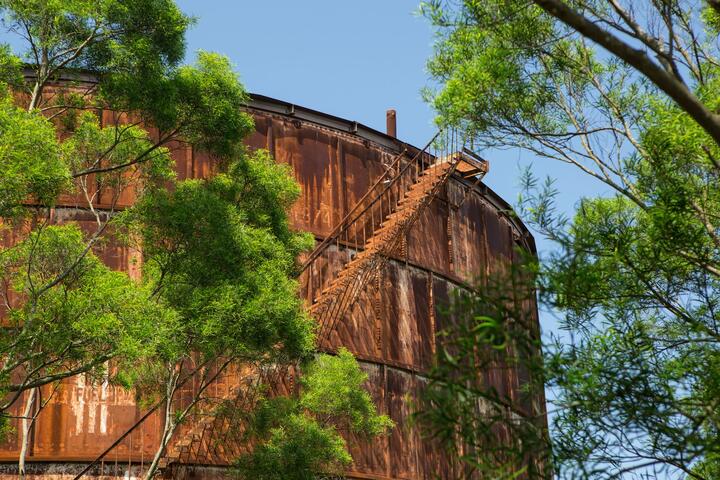Qingshui Dayang Oil Depot Introduction
In the 1950s, Taiwan and the United States signed a Mutual Defense Treaty, and based on this agreement, the original Gongguan Airport was expanded and renamed "Qingquangang" Airport in honor of anti-Japanese hero General Qiu Qingquan. It became the largest air force base in the Far East at that time. When the Vietnam War broke out in 1962, the U.S. military stationed C-130 Hercules transport planes in Taiwan to support operations in North Vietnam, using Qingquangang Airport as a logistics base. In 1966, seven fuel depots were built in Yangcuo Village in the nearby Qingshui District to supply fuel for U.S. fighter jets and B-52 bombers. However, with the end of the Vietnam War and the severance of diplomatic ties, this place gradually lost its significant military status. The Dayang Oil Depot is the only remaining historical structure, witnessing the cultural background of the Vietnam War, standing like a giant on the Dadu Mountain Plateau. The seven large fuel depots cover an area of about 16 hectares, with each depot surrounded by a dike approximately 78 meters long and 1.5 meters high; the depots themselves have a diameter of about 28.4 meters and a height of about 16 meters, with an outer staircase of 66 steps and steel plates with a thickness of 0.9 to 1.5 centimeters. However, in 2000, the military contracted a company to dismantle the fuel tanks for scrap metal. Fortunately, through the efforts of civilian groups and local government, the last depot was saved from the winning bidder, preserving the historical and cultural assets from the Vietnam War. The fuel transportation method involved U.S. tankers docking in the Gaomei waters and utilizing underground pipelines along the Dajia River to deliver fuel to a pumping station in Gaobeili, which was then sent eastward to the seven fuel depots in Yangcuo Village. In 2014, the Dayang Oil Depot Recreation Park was completed north of Dayang Elementary School, with the Dayang Oil Depot being the most unique sight in the park. The depots are generally not open for internal visits, and they are surrounded by firewalls, gates, and forests. Starting from April 1, 2022, they are open for free visits every Saturday from 10 AM to 12 PM. During the open hours, please contact Mr. Zeng Wenchun from the Yangcuo Community Development Association for assistance in entering for a visit at 0921-787803.































